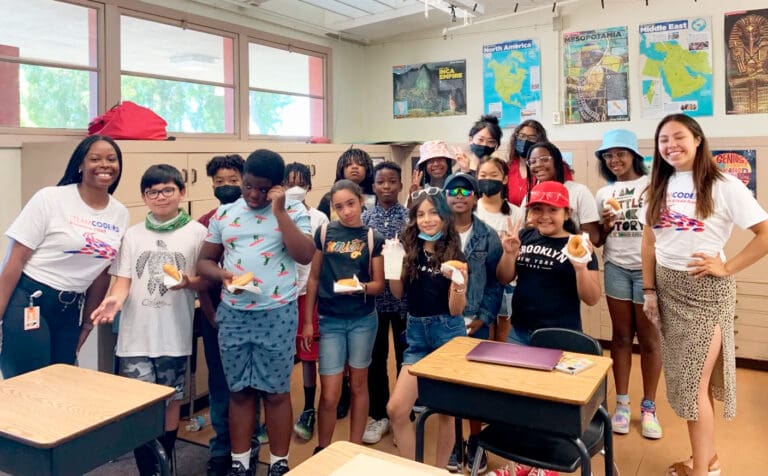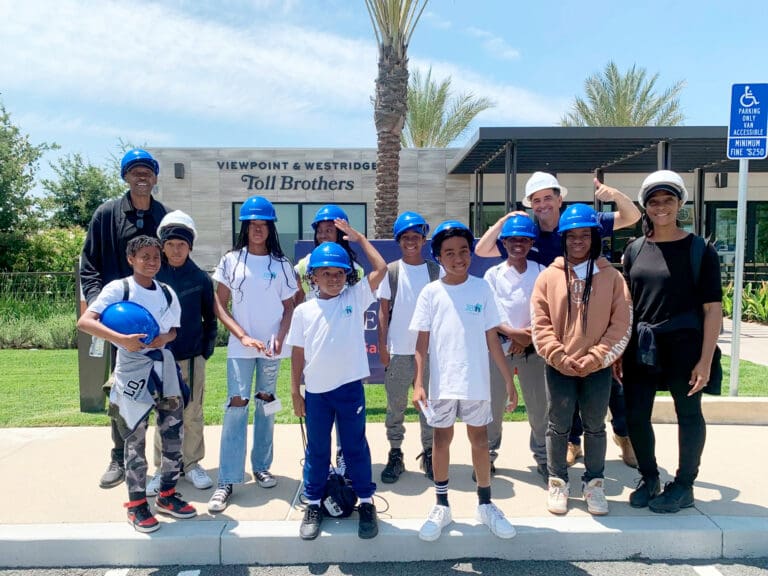This Camp Trains Black Students for Futures in STEAM
By Maya Pottiger, Word In Black
STEAM:CODERS is on a mission to introduce one million students to science, technology, engineering, arts, and math.
After majoring in communications, a Tulane student wanted to switch majors in her junior year to computer science.
Advisors doubted her because she didn’t have the prerequisite classes, saying she was “way behind.” They offered self-study assignments to catch up and see if it would be a good fit.
When she looked at the assignments, she told advisors she already knew this stuff. During high school, she’d done a program called STEAM:CODERS, which taught her coding languages.
“They were able to share with the students their experience, having sat in those chairs learning coding and robotics, and now being able to use those skills in college as freshmen.”
Now she has a computer science degree and a job at Accenture.
“That was really a big moment for her to be able to fall back on what she learned in high school and use that in college to be able to get her degree,” says Raymond Ealy, executive director and founder of STEAM:CODERS.
It’s success stories like these Ealy likes to share with campers every summer to give them something to relate to. And, now that former campers have returned to instruct programs, STEAM:CODERS has come full circle.
“They were able to share with the students their experience, having sat in those chairs learning coding and robotics, and now being able to use those skills in college as freshmen,” Ealy says. “It’s working. Living Proof.”

How STEAM:CODERS Works
STEAM:CODERS, based in Pasadena, California, serves underrepresented and underserved K-12 students. About 40% of attendees are Hispanic, and 25% are Black.
About 500 kids go through the programs every summer — more than 60,000 since it started in 2014 — in class sizes of about 15 to 20. They try to keep the classes small to give each student the attention they need. This is important because most of the students come from Title I schools where they’re in a class of more than 30 people, Ealy says.
“If you struggle and raise your hand, there really is nobody to come by and help you because the teacher has to keep the class moving,” Ealy says. “We try to make sure that, if you do raise your hand, if you get stuck, we have somebody in the room who could sit with you until you catch up.”
“We try to make sure that, if you do raise your hand, if you get stuck, we have somebody in the room who could sit with you until you catch up.”
The elementary school-aged kids do beginning lessons like Scratch, a basic coding language that helps them get familiar with the look and feel of coding languages. Once in middle school, the skill level increases, with students learning languages like Python and JavaScript, along with the more creative offerings of game design, video editing, and robotics. And high school-aged students build on these skills through web design, data science and analytics, and even cybersecurity.
“For those who want to move on and take computer science and AP classes, we try to really push the envelope for them so that they’re ready,” Ealy says.
In 2022, Black students were severely underrepresented in the overall students who took Biology, Calculus AB, and Statistics AP tests. While white students made up an average of 74% who took these exams, and Hispanic students made up an average of 20%, Black students made up about 7% of students.
And the rate drops even lower when looking at those who scored at least a 3 on the exam, which is the lowest score colleges accept as transfer credits. White students made up 81% of those who scored at least a 3 on the exam, Hispanic students made up 14%, and Black students accounted for only 4%.

To help keep students on track, each class is broken into three groups: Kids who are moving a little quicker, students who are “going in lockstep” with the teacher, and the group that’s struggling.
“Having three [instructors] in a classroom allows us to address all three groups,” Ealy says. “We don’t know who they are initially, but after we figure it out, they have a designated person, and they don’t have to worry about how fast or how slow the rest of the class is moving.”
Aside from learning the skills, there’s an exciting aspect to the camp: Field trips to places like Nickelodeon and Warner Bros. to see the professions in action.
They talk to animators and other production professionals on shows like Spongebob and Rugrats, where they know the characters but not how the shows are put together. It teaches them what kinds of jobs exist in the industry and makes them more relatable.
“We take them places they’ve never thought about, and they get to talk to people in roles they know nothing about,” Ealy says. “It’s a real highlight for the kids. They didn’t know there were that many jobs involved.”
Opening Their Eyes
In the communities STEAM:CODERS serve, many people don’t look to the tech field as an opportunity, Ealy says.
“Primarily, it’s because their families are not in those fields. Their families may be working lower-skilled or unskilled jobs and didn’t go to college,” Ealy says.
In the beginning, STEAM:CODERS bounced around to different locations with computer labs, like community centers. But then it fostered relationships with local universities that had unused labs. And this benefit was two-fold.
“It gets those kids on a college campus for the first time,” Ealy says. “They can look around and see what it’s like, so we plant that college seed early.”
After the college exposure, Ealy wanted to ensure students were exposed to the tech job market and what opportunities were available to them.
In 2021, about a quarter of the United States’ workforce was employed in STEM occupations, but Black people only accounted for 9%, compared to 10% of Asian workers and 15% of Hispanic workers, according to the National Center for Science and Engineering Statistics.
“We’re trying to make sure everybody knows that those jobs are out there and have some training, some fundamentals so that they can take advantage of those opportunities,” Ealy says. “It just makes the country stronger when we have a larger talent pool, and that talent pool is getting opportunities.”
